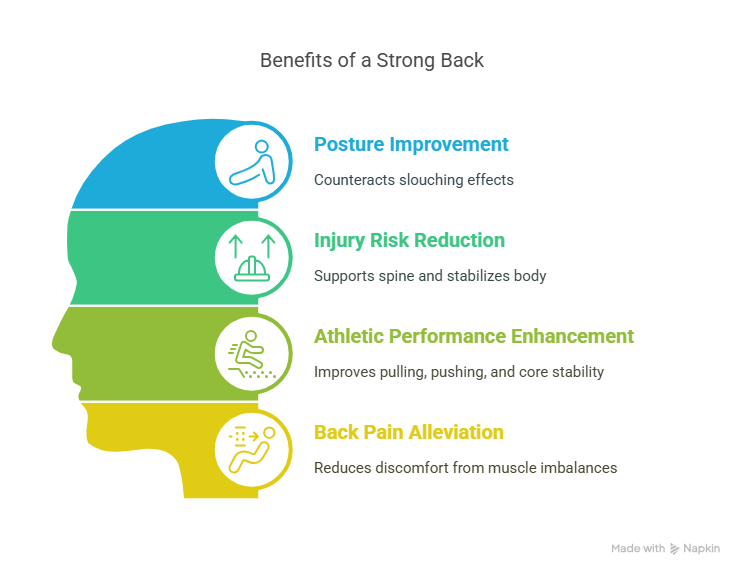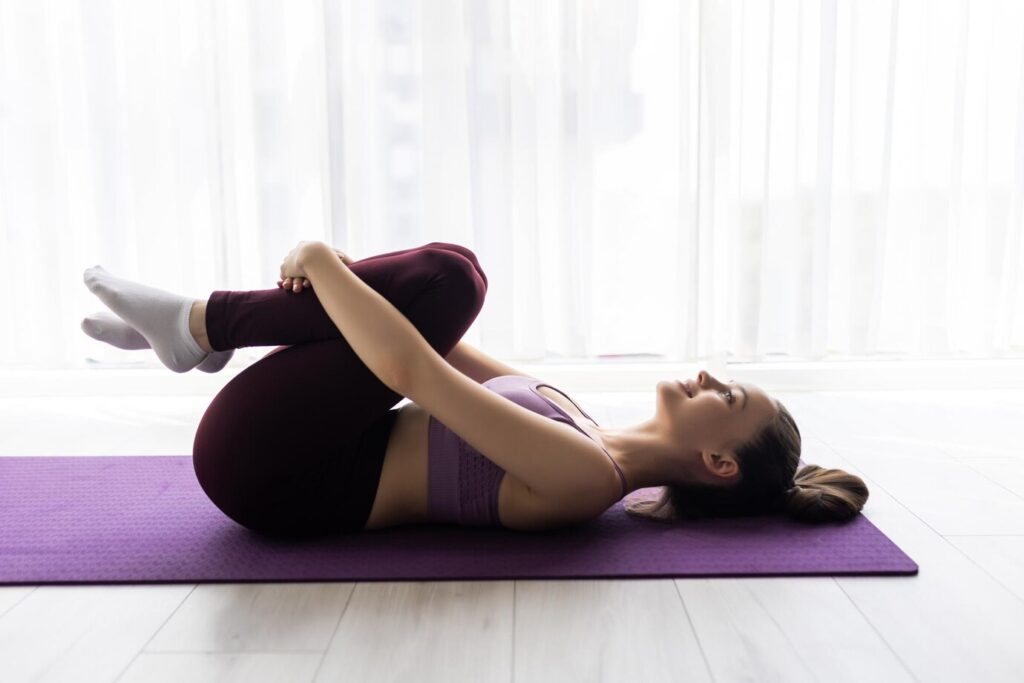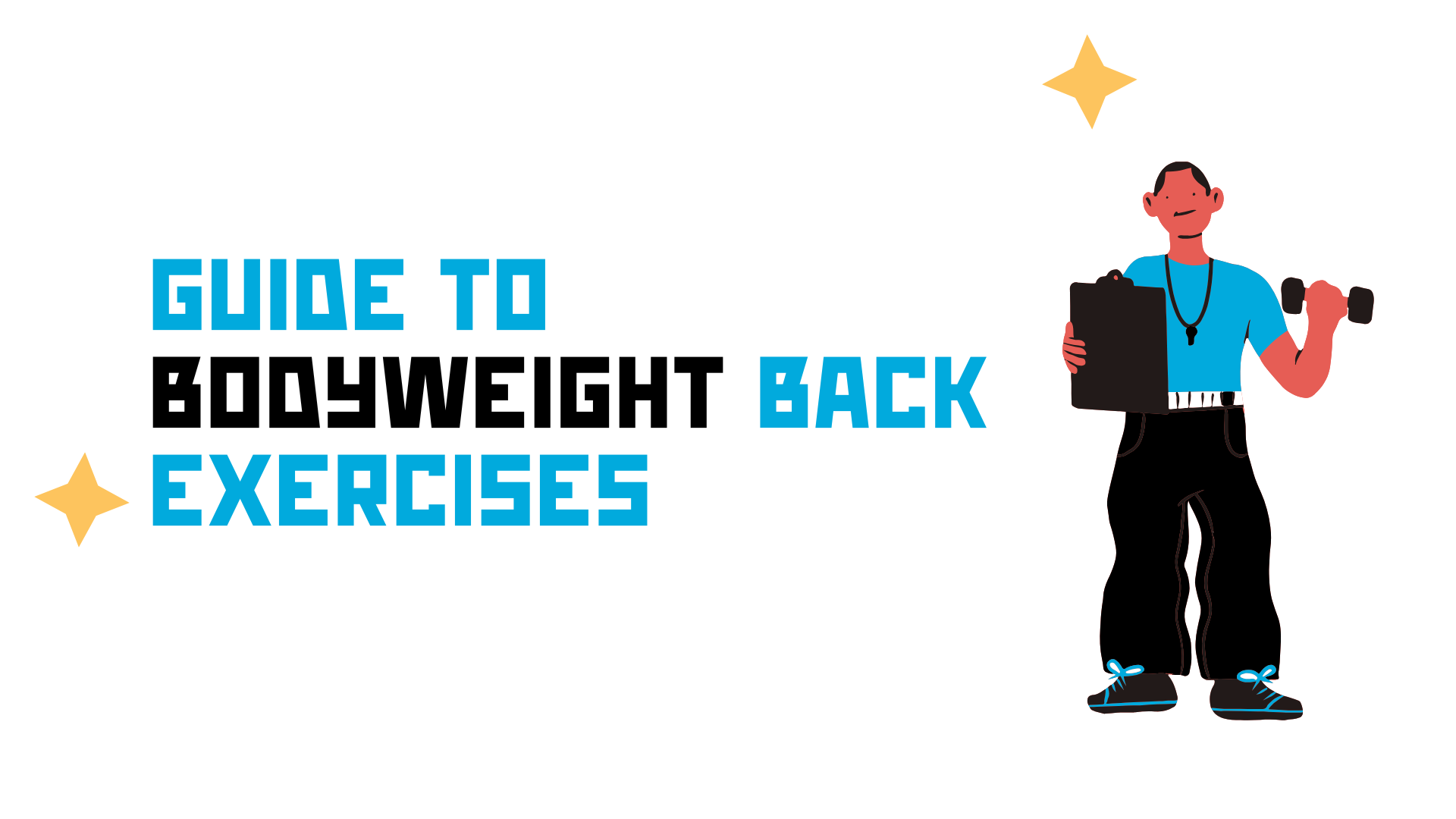A strong back is essential for posture, mobility, and overall strength.
You don’t need a gym or fancy equipment to build a powerful back bodyweight exercises can be highly effective when done correctly.
In this blog, we’ll explore the best bodyweight back exercises, their benefits, and how to perform them to target key muscles like the lats, traps, rhomboids, and erector spinae.
Whether you’re a beginner or a fitness enthusiast, these exercises will help you develop a stronger, healthier back.
Why Train Your Back?
Your back muscles play a critical role in daily activities, from lifting objects to maintaining proper posture. Strengthening your back can:

Bodyweight exercises are accessible, require no equipment, and can be modified for any fitness level. Let’s dive into the top bodyweight back exercises.
Top Bodyweight Back Exercises
1. Superman Hold
Target Muscles: Erector spinae, glutes, traps, rear delts
Benefits: Strengthens the entire posterior chain and improves spinal stability.
How to Do It:
- Lie face down on a mat with arms extended overhead and legs straight.
- Simultaneously lift your arms, chest, and legs off the ground, squeezing your glutes and engaging your back.
- Hold the position for 3-5 seconds, keeping your neck neutral.
- Slowly lower back down and repeat.
- Reps: 12-15 reps for 3 sets.
Tips:
- Avoid straining your neck; look down to maintain alignment.
- For a challenge, pulse up and down slightly while holding the position.
2. Reverse Snow Angel
Target Muscles: Traps, rhomboids, rear delts
Benefits: Mimics a pulling motion to strengthen upper back muscles and improve shoulder mobility.
How to Do It:
- Lie face down with arms at your sides, palms facing down, and legs straight.
- Lift your chest slightly off the ground and hover your arms.
- Move your arms in an arc from your hips to overhead (like making a snow angel in reverse), keeping them straight.
- Return to the starting position and repeat.
- Reps: 10-12 reps for 3 sets.
Tips:
- Keep movements controlled to maximize muscle engagement.
- If it’s too hard, reduce the range of motion.
3. Prone Cobra
Target Muscles: Lower traps, rhomboids, erector spinae
Benefits: Improves posture and strengthens muscles that counteract forward shoulder slouch.
- Lie face down with arms at your sides, palms facing up.
- Lift your chest off the ground, squeeze your shoulder blades together, and rotate your thumbs outward.
- Hold for 15-30 seconds, keeping your feet on the ground.
- Lower slowly and repeat.
- Reps: 3-4 holds for 15-30 seconds each.
How to Do It:
Tips:
- Engage your core to avoid overarching your lower back.
- Progress by increasing hold time or adding small pulses.
4. Bridge with Reach
Target Muscles: Erector spinae, glutes, lats
Benefits: Combines lower back strengthening with a lat-stretching movement.

How to Do It:
- Lie on your back with knees bent, feet flat, and arms at your sides.
- Lift your hips into a bridge, squeezing your glutes.
- Reach one arm overhead and across your body toward the opposite side, engaging your lats.
- Return the arm, lower your hips, and repeat on the other side.
- Reps: 10-12 reps per side for 3 sets.
Tips:
- Keep hips level during the reach to maintain stability.
- For intensity, hold the bridge position and alternate reaches.
5. Scapular Push-Up
Target Muscles: Traps, rhomboids, serratus anterior
Benefits: Strengthens shoulder stabilizers and improves scapular mobility.
How to Do It:
- Start in a high plank position with arms straight and core engaged.
- Without bending your elbows, retract your shoulder blades (pull them together).
- Then protract them (push them apart) by allowing your chest to sink slightly.
- Continue this back-and-forth motion.
- Reps: 12-15 reps for 3 sets.
Tips:
- Keep your body in a straight line; don’t let your hips sag.
- Modify by doing this on your knees if needed.
6. Doorframe Rows (Isometric Hold)
Target Muscles: Lats, traps, rhomboids
Benefits: Simulates a rowing motion to build pulling strength using a sturdy doorframe.
How to Do It:
- Stand in a doorway and grip a sturdy doorframe with both hands at chest height.
- Lean back slightly, keeping your body straight and feet planted.
- Pull your chest toward the doorframe by squeezing your shoulder blades together.
- Hold the contraction for 10-20 seconds, then release.
- Reps: 4-5 holds for 10-20 seconds each.
Tips:
- Ensure the doorframe is secure and stable.
- Increase intensity by leaning back further or holding longer.
Sample Bodyweight Back Workout Routine
Here’s a simple, no-equipment workout to target your back. Perform this 2-3 times per week, resting 30-60 seconds between sets.
- Superman Hold: 3 sets of 12-15 reps
- Reverse Snow Angel: 3 sets of 10-12 reps
- Prone Cobra: 3 sets of 15-30 second holds
- Bridge with Reach: 3 sets of 10-12 reps per side
- Scapular Push-Up: 3 sets of 12-15 reps
- Doorframe Rows: 4 sets of 10-20 second holds
- Warm-Up: 5 minutes of dynamic stretches (arm circles, cat-cow, torso twists).
- Cool-Down: Stretch your lats, traps, and lower back with child’s pose, thread-the-needle, and seated spinal twists.
Tips for Success
- Focus on Form: Proper technique ensures you target the right muscles and avoid strain.
- Engage Your Core: A strong core stabilizes your spine during back exercises.
- Progress Gradually: Increase reps, hold times, or intensity as you get stronger.
- Combine with Other Movements: Pair back exercises with bodyweight pushes (e.g., push-ups) and core work for a balanced routine.
- Stay Consistent: Aim for 2-3 back-focused workouts per week for noticeable results.
Common Mistakes to Avoid
- Overarching the Lower Back: Engage your core to protect your spine, especially in prone exercises like Superman.
- Using Momentum: Slow, controlled movements maximize muscle activation.
- Neglecting Scapular Movement: Focus on squeezing and retracting your shoulder blades to engage your upper back.
- Ignoring Pain: Mild soreness is normal, but stop if you feel sharp pain, especially in your lower back.
Modifications for Beginners and Advanced Trainees
Beginners:
- Reduce reps or hold times (e.g., 5-10 seconds for Superman).
- Perform exercises like scapular push-ups on your knees.
- Focus on mastering form before increasing intensity.
Advanced:
- Add pauses or pulses to exercises (e.g., pulse at the top of a Superman).
- Increase hold times (e.g., 30-60 seconds for Prone Cobra).
- Combine exercises into a circuit with minimal rest for a cardio boost.
Conclusion For Bodyweight Back Exercise
Bodyweight back exercises are a fantastic way to build strength, improve posture, and enhance overall fitness without equipment.
By incorporating moves like Superman Holds, Reverse Snow Angels, and Scapular Push-Ups into your routine, you can effectively target all the major muscles of your back.
You can start with the sample workout, focus on form, and progress at your own pace.
A stronger, healthier back is within your reach—no gym required!
Frequently Asked Questions About Bodyweight Back Exercises
Can you train back with bodyweight?
Yes, you can effectively train your back using bodyweight exercises like pull-ups, inverted rows, Superman holds, and bridge variations. These target muscles like the lats, traps, and rhomboids without equipment.
How to train back without machines?
Use bodyweight exercises such as pull-ups (using a bar or sturdy surface), inverted rows (under a table or bar), reverse snow angels, and prone Y-T-I raises. Incorporate progressions like adding pauses or increasing reps for intensity.
Is a 30-minute back workout enough?
Yes, a 30-minute bodyweight back workout can be sufficient if it includes high-intensity exercises like pull-ups, inverted rows, and Superman variations with proper form and progressive overload. Consistency and effort are key.
Do pushups work back?
Pushups primarily target the chest, shoulders, and triceps, but they engage back muscles (lats, traps, and rhomboids) isometrically for stabilization. They’re not a primary back exercise but can contribute minimally.
Do dips work back?
Dips mainly target the chest, triceps, and shoulders, but they engage the lats and lower traps for stabilization, especially in parallel bar dips. Like pushups, they’re not a primary back exercise.

